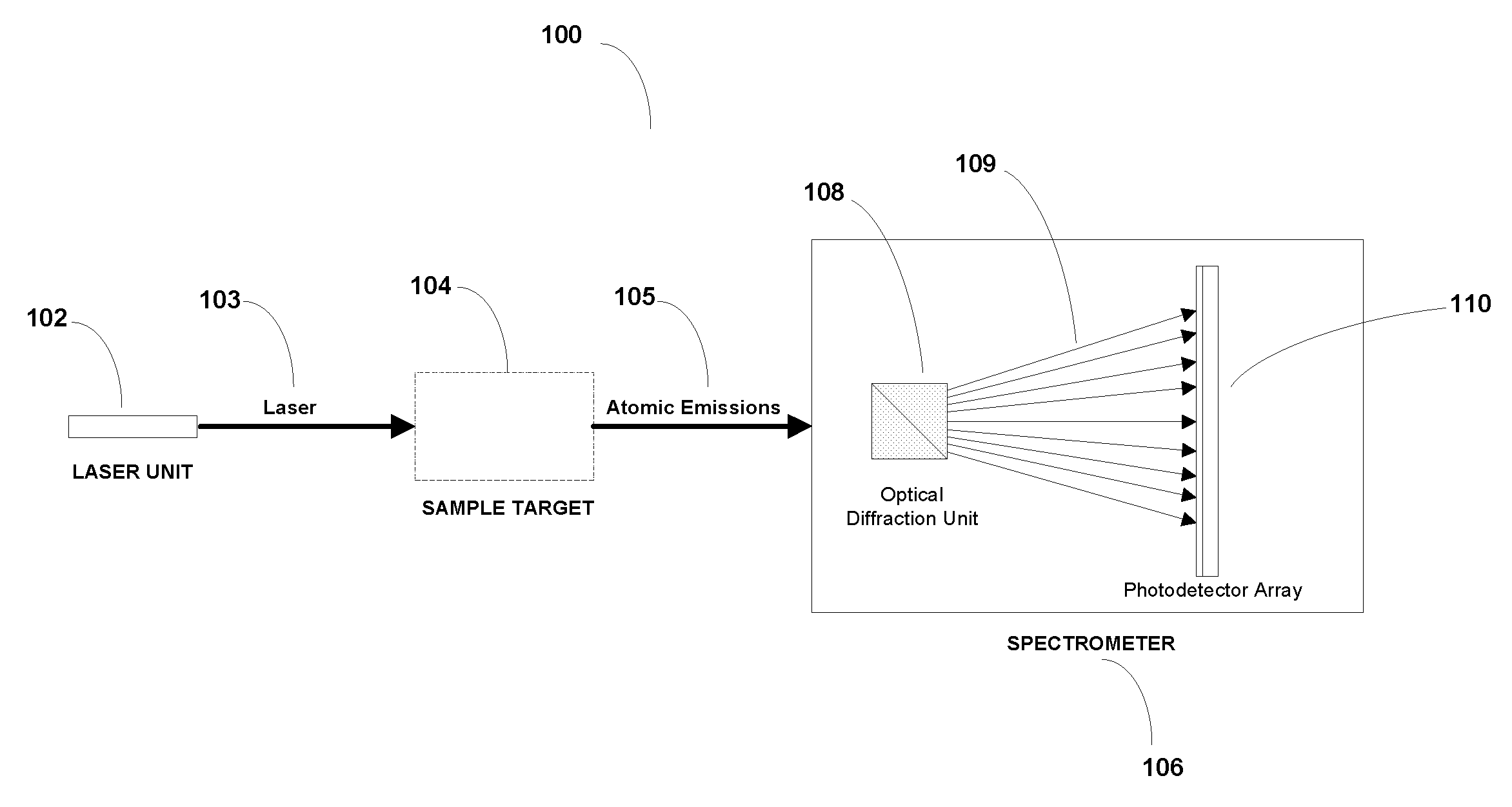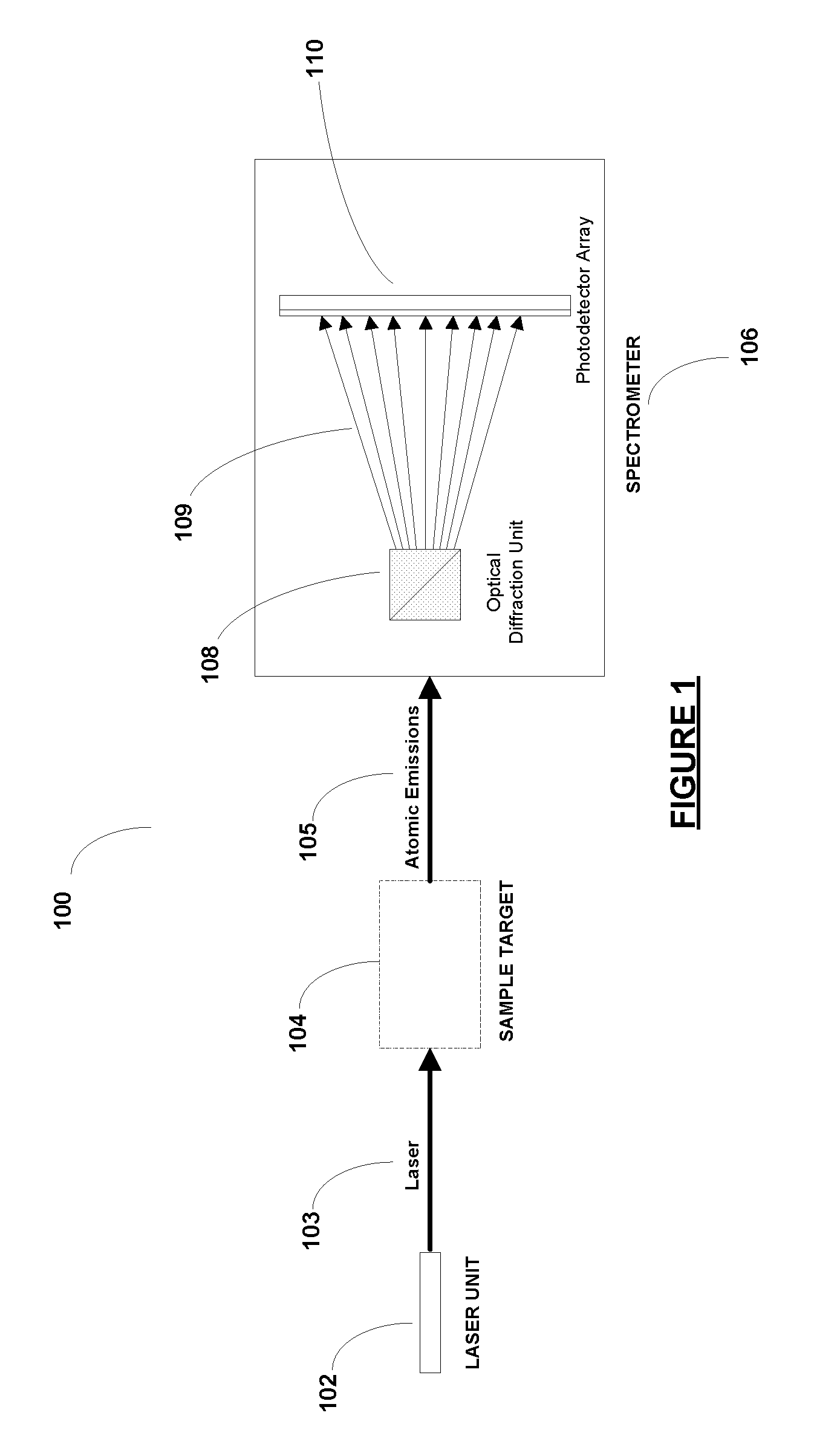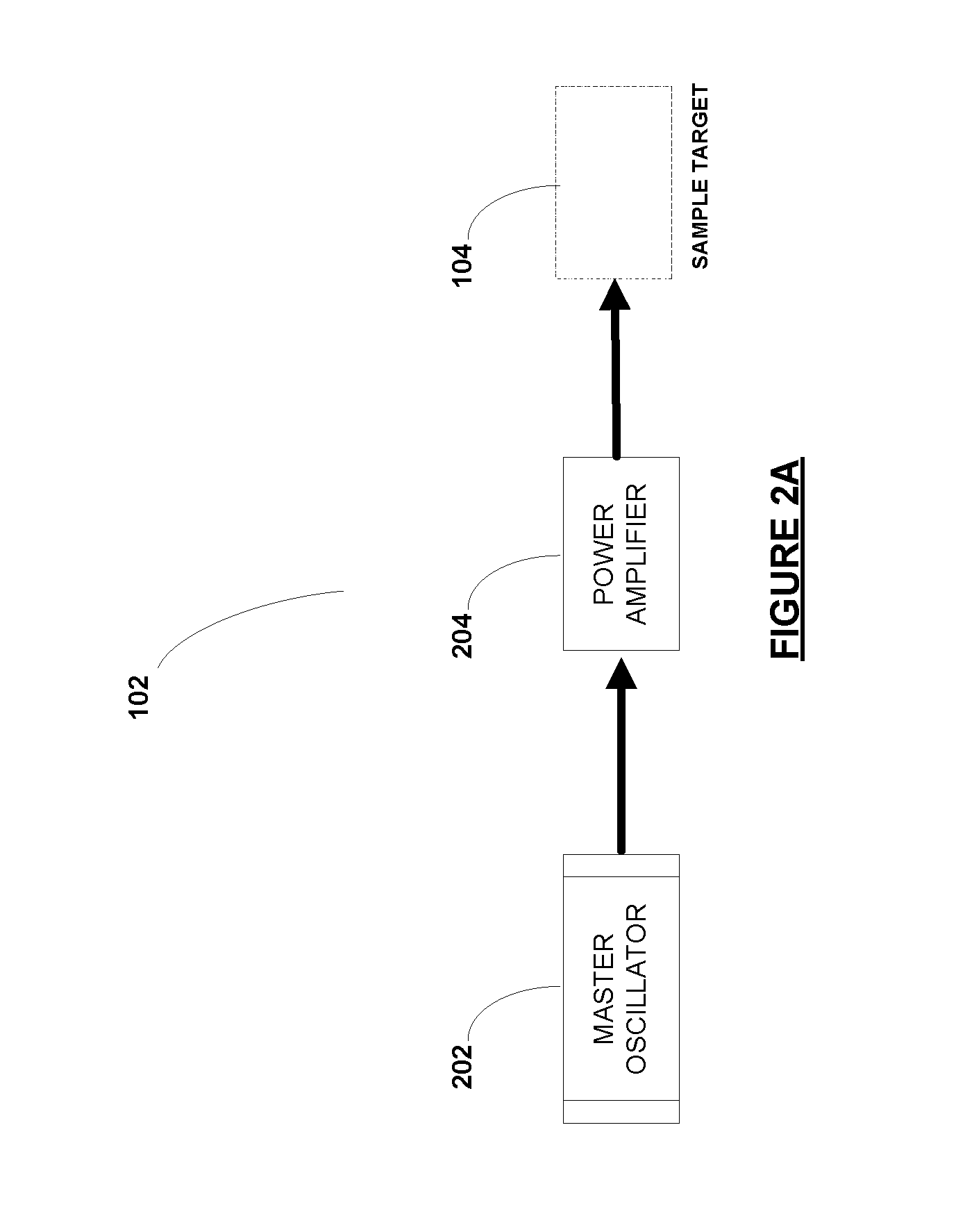Multipulse agile laser source for real time spark spectrochemical hazard analysis
a laser source and spark technology, applied in the direction of optical radiation measurement, instruments, spectrometry/spectrophotometry/monochromators, etc., can solve the problems of interference due, high detection limit, >1 ppm,
- Summary
- Abstract
- Description
- Claims
- Application Information
AI Technical Summary
Benefits of technology
Problems solved by technology
Method used
Image
Examples
Embodiment Construction
.”
BRIEF DESCRIPTION OF THE DRAWINGS
[0018] For a more complete understanding of the principles disclosure herein, and the advantages thereof, reference is now made to the following descriptions taken in conjunction with the accompanying drawings, in which:
[0019]FIG. 1 is an illustration of how a laser induced breakdown spectroscopy (LIBS) system may be configured, in accordance with one embodiment.
[0020]FIG. 2A is a schematic depiction of a MOPA laser unit with an amplification module, in accordance with one embodiment.
[0021]FIG. 2B is a schematic illustration of a MOPA laser unit with a pre-amplifier module and four parallel power amplifier modules, in accordance with one embodiment.
[0022]FIG. 3A is a schematic layout of a master oscillator used to generate multiple laser pulses using Pockels cells, in accordance with one embodiment.
[0023]FIG. 3B, is a schematic layout of a master oscillator where the Pockels cells are positioned between the gain medium and the quarter wavelen...
PUM
 Login to View More
Login to View More Abstract
Description
Claims
Application Information
 Login to View More
Login to View More - R&D
- Intellectual Property
- Life Sciences
- Materials
- Tech Scout
- Unparalleled Data Quality
- Higher Quality Content
- 60% Fewer Hallucinations
Browse by: Latest US Patents, China's latest patents, Technical Efficacy Thesaurus, Application Domain, Technology Topic, Popular Technical Reports.
© 2025 PatSnap. All rights reserved.Legal|Privacy policy|Modern Slavery Act Transparency Statement|Sitemap|About US| Contact US: help@patsnap.com



